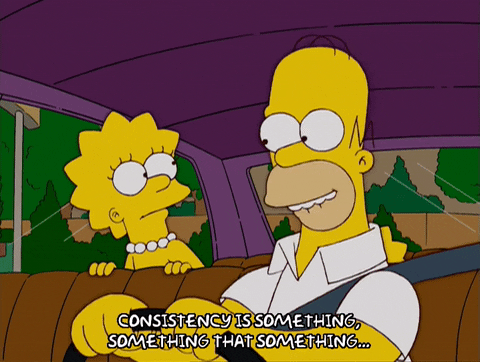Academic Paper: Bibliography and Citation Styles
4 min read•june 18, 2024
Dylan Black
AP Research 🔍
28 resourcesSee Units
✏️ Introduction
As you write your Research paper, you'll be reading a lot of outside research. By a lot, I mean a lot. Whether you're reading academic papers, lectures, media works, books, magazines, journal articles, or anything else, you will need to accurately attribute the authors of these works. You've most likely worked with citations and Works Cited pages in the past, specifically in AP Seminar where citations were required, but in AP Research it becomes a whole other ball game.
Including correct citations is an easy way to avoid losing what should be an easy 5 on the rubric, and it's also important to make sure that you don't plagiarize. If you use data or results from someone else's paper and, even mistakenly, forget to attribute them at all, you could risk getting a 0 on your academic paper.
Furthermore, which citation style you choose is no longer a matter of what you feel most comfortable with but is rather what is considered discipline appropriate. For example, if every paper in your discipline uses APA as their citation style, you are essentially forced to use APA, regardless of whether or not you've used it before. While most citation styles are relatively similar, you may need to learn a new one for AP Research.
📚 Choosing a Citation Style
As I just mentioned, in AP Research, your citation style must be appropriate for your discipline. This is because different disciplines and different focuses require different information when attributing authors. The easiest way to figure out what citation style your discipline uses is to look at papers written in your discipline! However, if you're not sure, here are a few rules of thumb:
MLA
Odds are, despite being the most popular for AP Seminar and for high school papers in general, you will not end up using MLA in your research paper. MLA is typically used for educational purposes to teach citations and is used in very specific disciplines. MLA stands for "Modern Language Association" and is typically only used in papers about literature, film, and other artistic and literary works. Because the majority of students will be doing work outside of these fields, you probably won't use MLA.
APA
For most of you, APA will be the citation style of choice. Despite standing for "American Psychological Association", APA is the most popular citation style for the social sciences, nursing, and business. Disciplines like economics, psychology, sociology, linguistics, etc. fall under social sciences, as do many others. APA is also a good default since, unless your discipline has an extremely clear citation style, APA is professional and contains most of the information other disciplines require. However, if you know that your discipline uses another citation style, use that one, instead.
Chicago
The third major citation style is the Chicago Manual of Style, typically used in business, history, and the fine arts. Chicago is best known for the fact that it does not use parenthetical citations and, rather, uses footnotes. This is an easy way to recognize if your paper should be using Chicago. Chicago is typically the least used by high school students compared to MLA and APA, but it is a useful one to know, especially if you plan on doing research in the fields of business, history, or fine arts.
Other Citation Styles
While we've named the three most popular citation styles, there's a whole world of citation styles! Other notable styles are: AMA (American Medical Association), ACS (American Chemical Society), AMS (American Mathematical Society), and Turabian. These are all popular choices for students who are writing for very specific disciplines.

Image from GIPHY
📖 Consistency Over Choice
While there typically is one choice that is easy to make for your citation style, it's more important to stay consistent with the citation style that you use. Even if the style isn't perfect for your discipline, you want to make sure that all citations use the same style. Make sure your works cited page is the same style as your parenthetical citations and that the style of your paper as a whole matches the style. With many citation styles, not only do you have to pay attention to how you cite sources and how you attribute quotes with parenthetical citation, you also have to compare it with the entire design of your paper!
For example, a typical MLA paper has a header at the top of the first page with your name, teacher, date (in a particular format), and class along with the title centered on the page. By contrast, an APA paper will have a dedicated title page and a running title along the top of every page.
Making sure that these little things are not overlooked can help you earn more points and make sure you're not losing points on little mistakes.

Image from GIPHY
👨💻 Resources for Citations
For learning how to write certain citation styles, online resources are an absolute godsend. The best resource, in our opinion, is Purdue OWL, which has resources for MLA, APA, and Chicago, along with general writing tips. Other great resources include any university library, which typically has research tips along with citation tips.
Many people also like using citation generators, like EasyBib, which, while helpful, should be checked for accuracy since they can definitely screw up. Using them can speed up your process, but it's always important to double-check.
❗Conclusion
At this point, you are well on your way to writing a 🔥 paper with perfect citations and style. This "section" of your paper is essentially the only one that follows you throughout your entire Research journey. It is an incredibly easy section to both do really well on, but it is also easy to make dumb mistakes with. However, with these tips, you are off to a great start. Good luck!
Browse Study Guides By Unit
🤨Unit 1 – Question & Explore
🔎Unit 2 – Understand & Analyze
👥Unit 3 – Evaluate Multiple Perspectives
💡Unit 4 – Synthesize Ideas
🗣Unit 5 – Team, Transform, & Transmit
🎓The Academic Paper
✏️Frequently Asked Questions
📚Study Tools

Fiveable
Resources
© 2025 Fiveable Inc. All rights reserved.